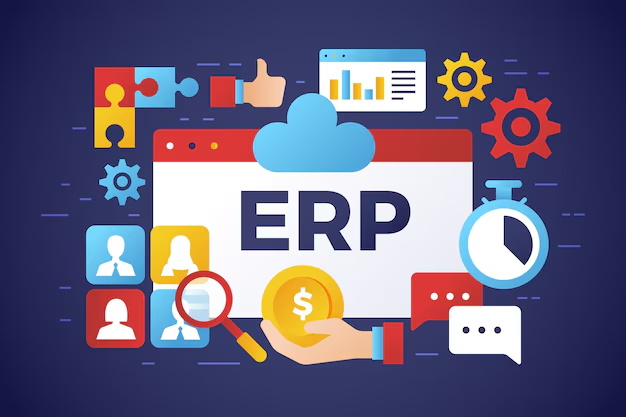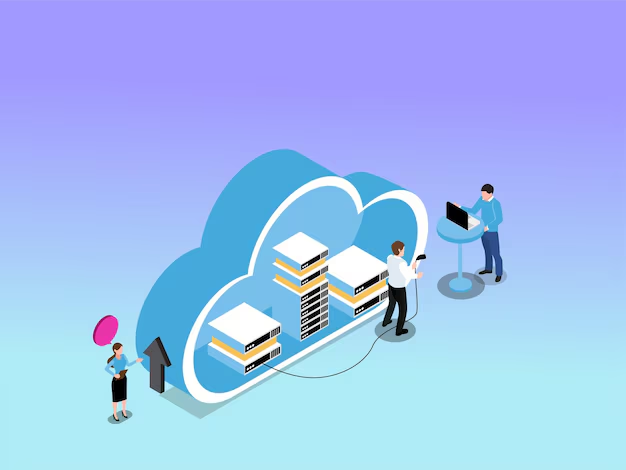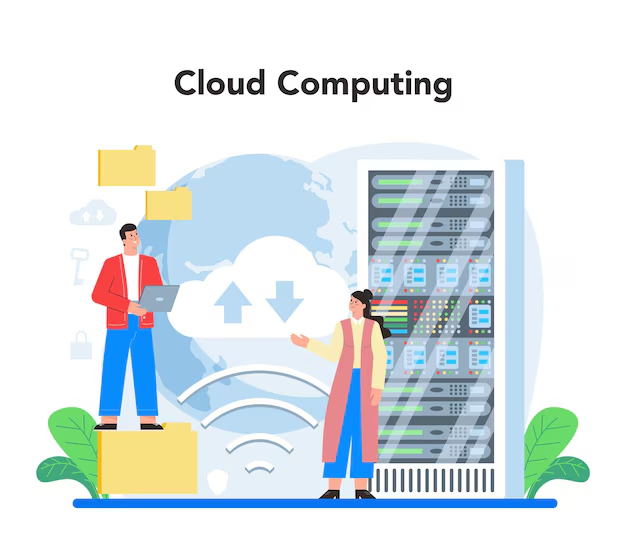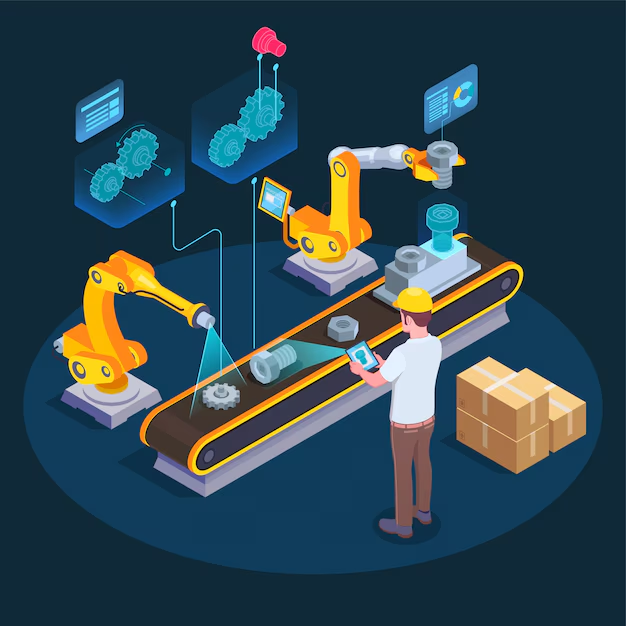SAP Business One (SAP B1), one of the most popular ERP solutions for small and medium-sized enterprises, is gradually transitioning to a full-cloud model instead of on-premise. This change brings many benefits such as flexible access, high security, and more accurate cost prediction. However, the transition from the on-premise version to the cloud requires businesses to carefully consider costs and many other factors.
Before the official information from SAP's website, SAP's focus on the cloud version of SAP Business One opens up many opportunities for other businesses in the technology sector, especially companies providing ERP solutions, software, and related services.
This article will provide solutions for businesses that are not yet ready to transition and suggest opportunities for technology companies offering ERP and related services.
1. Comparison of SAP B1 on-premise and cloud

SAP B1 Cloud is a version of the SAP Business One (SAP B1) enterprise resource planning software that operates on a cloud computing platform. Instead of installing the software directly on the company's servers (on-premise version), SAP B1 Cloud is hosted and managed on SAP's servers or those of reputable cloud service providers.
To better understand these two versions, let's compare the features of SAP B1 on-premise and SAP B1 Cloud below:
| Factor | SAP B1 on-premise | SAP B1 cloud |
Installation | Installation on the company's server. | No installation required, access via web browser. |
Management | The business manages and maintains itself. | SAP is responsible for management and maintenance. |
Cost | High initial investment costs, annual maintenance costs. | Costs in the form of subscriptions, usually calculated based on the number of users. |
Scale of expansion | Difficulties in scaling up and down. | Easy to scale up and down. |
Update | Manual updates are required. | Automatically update to the new version. |
Access | Only accessible from internal computers. | Access from anywhere with an internet connection. |
Security | The enterprise is responsible for security. | SAP is responsible for security. |
2. Limitations when transitioning SAP B1 from on-premise to full-cloud

The transition from the on-premise version of SAP B1 to the full-cloud version brings many benefits but also comes with some limitations that businesses need to carefully consider before making a decision. Here are the main limitations:
2.1 Long-term costs
High recurring fees:
Businesses have to pay monthly or annual subscription fees, instead of just a one-time payment for on-premise software. The total usage cost can increase in the long term, especially for businesses with stable and unchanging needs.
Dependence on the supplier:
Businesses cannot control the price because the supplier may increase the price after the initial usage period.
2.2 Network connectivity issues
The speed and stability of the network connection directly affect the system's performance. If the network connection is poor, business operations may be disrupted. High latency can cause issues in data transmission, especially for real-time activities such as production.
2.3 Concerns about data security
Limited data control:
Data is stored on the cloud service provider's system instead of on internal servers, leading to a feeling of loss of data control.
Risk of security breaches:
Data on the cloud can become a target for major cyberattacks, especially if the service provider does not meet stringent security standards.
2.4 Difficulties in integrating with the current system
Integration with legacy applications:
Current on-premise systems may not easily integrate with SAP B1 cloud, especially if the business is using custom or outdated software.
Adjustment costs:
It requires cost and time to upgrade or modify the current systems to ensure smooth integration.
2.5 Risks during the transition
Data loss:
The process of migrating data from on-premise to the cloud can encounter the risk of loss or errors if not carried out carefully.
Operational disruption:
The transition requires time and can disrupt business operations during the transition period.
2.6 Dependent on the provider
Bound to cloud services:
Once switched to the cloud, businesses will heavily depend on the SAP provider for maintenance, upkeep, and support.
Difficult to switch providers:
Moving data or systems to another ERP platform can be challenging if the business is not satisfied with SAP cloud.
3. Tailored Solutions for SAP B1 Users Not Ready for Cloud

3.1 Optimize the current on-premise SAP B1 system
Upgrade to the latest version:
Ensure the business is using the latest on-premise SAP B1 version to take advantage of the latest features, improvements, and security patches.
Enhance hardware performance:
Invest in upgrading servers, memory, and network infrastructure to ensure the system operates stably.
Using HANA:
If not already using it, businesses can switch to SAP HANA on-premise to take advantage of its fast processing speed and powerful data analysis capabilities.
3.2 Combining the hybrid model (Cloud + On-Premise)
Use the cloud for some additional services:
Leverage SAP or third-party cloud services to store backup data, perform advanced analytics, or integrate applications like CRM.
Critical data on-premise, flexible applications on the cloud:
Store sensitive or core data on-site, while using the cloud to support processes that do not require high security (e.g., reporting or customer management).
3.3 Prepare a gradual transition plan
Assess actual needs:
Analyze the benefits and limitations of cloud migration based on the current and future needs of the business.
Building a transformation roadmap:
Establish a long-term plan, divided into small phases to gradually move the system to the cloud when the business is ready.
Training personnel:
Start training employees to prepare them to familiarize themselves with new platforms and processes, minimizing future disruptions.
3.4 Seeking alternative or supplementary solutions
Open-source ERP solutions:
Businesses can explore open-source ERP solutions like Odoo, which allow on-premise deployment with lower costs and high customization capabilities.
Integrate external tools:
Use supplementary software or applications (e.g., Power BI, Zoho CRM) to improve performance without needing to change the entire SAP B1 system.
3.5 Find consulting and support partners
Collaborate with reputable SAP partners:
Seek partners who provide implementation, support, and consulting services to optimize the on-premise SAP B1 system.
Seek consultation on hybrid solutions:
Receive support from experts to implement a hybrid model tailored to the specific needs of the business.
3.6 Diversifying technology infrastructure
Using virtualization platforms:
Consider using platforms like VMware to optimize costs and manage on-premise resources more efficiently.
Prepare for new technologies:
Invest in technologies such as IoT, AI, or blockchain to enhance the value that the current system provides, without the need for a complete overhaul.
4. Opportunities for technology companies to provide ERP solutions, software, and related services.

4.1 Provide alternative ERP solutions
Positioning a proprietary ERP solution:
- Businesses like Odoo, Epicor, NetSuite, Microsoft Dynamics 365, or custom ERP solutions can take advantage of this moment to offer alternatives, especially for companies that are not yet ready to transition to the cloud.
- Focus on features that SAP has not optimized, such as lower costs, easier integration, or a more user-friendly interface.
- Develop ERP products for niche markets: Create ERP products focused on specific industries or business scales that SAP B1 may not serve well (e.g., ERP for agriculture or small manufacturing).
4.2 Integration and customization services
With SAP gradually moving to the cloud, the demand for integration between cloud and on-premise systems will increase. IT companies can provide:
Services to connect old systems with the new cloud system.
Customize and develop auxiliary applications to integrate with SAP cloud.
4.3 Support for system migration (Migration Services)
Cloud consulting and deployment:
The demand for transitioning from on-premise to cloud will increase significantly. Technology companies can provide consulting, implementation, and management services for this transition process.
Opportunities for SAP partners or independent companies to support former SAP customers.
Integration solutions:
Businesses can provide integration services for existing systems (CRM, accounting, inventory management) with SAP B1 cloud. Develop easy integration tools for other platforms such as Shopify, WooCommerce, or IoT systems.
4.4 Ecosystem of supplementary services
Expansion solutions:
+ Develop supplementary applications for SAP B1 cloud such as reporting tools, advanced data analysis (BI), supply chain management, or human resource management.
+ Focus on functions that SAP does not have available or require customer customization.
Optimize specific industries:
Build modules tailored for the healthcare, education, manufacturing, or logistics sectors, leveraging SAP B1 cloud as the foundation.
4.5 Cloud security and governance services
Cloud data security:
Providing advanced security solutions to protect customer data on the cloud platform, including data encryption, intrusion detection, and access management.
Cloud cost optimization:
Many businesses will need support in optimizing their cloud usage costs, helping them analyze and reduce unnecessary expenses (such as storage capacity or bandwidth).
4.6 Education and Training
Human resource transformation:
Provide training courses for business employees to familiarize themselves with SAP B1 cloud, especially the data management functions on the cloud.
Talent development:
Train deployment, management, and customization experts for SAP cloud, providing certifications to create a highly skilled workforce.
4.7 Developing specialized solutions
Companies can focus on specific industries, developing specialized ERP solutions tailored to each sector, creating a distinction from SAP.
SAP's transition not only drives the cloud ERP market but also creates opportunities for small and medium-sized enterprises, as well as technology service providers, to leverage this trend to expand and innovate their services.
4.8. Building an open ERP platform
Open-source ERP:
Technology companies can focus on developing and promoting open-source ERP solutions like Odoo or ERPNext, aiming to provide a flexible and cost-effective option for businesses.
Hybrid solution (Cloud + On-Premise):
Create hybrid systems that allow businesses to store core data on-site while using cloud services to increase flexibility.
4.9 New support services and tools
Developing APIs and integration tools:
Provide APIs and tools to help businesses easily integrate SAP B1 cloud with existing systems.
Automation platform:
Develop business process automation (RPA) tools to optimize ERP usage efficiency on the cloud platform.
4.10 Research and development of AI/ML in ERP
Integrating artificial intelligence (AI):
Develop AI features such as inventory forecasting, cash flow optimization, or customer data analysis.
Integration of machine learning (ML):
Provide ML tools that allow businesses to analyze historical data from ERP to make smarter business decisions.
5. Epicor - one of the optimal management solutions for replacing manufacturing operations 
Epicor is one of the ERP (Enterprise Resource Planning) solutions that many businesses choose to replace SAP B1. With superior features such as advanced production planning, comprehensive supply chain management, and stringent quality control, as well as extensive integration capabilities with various systems, from IoT to AI, Epicor becomes a powerful platform for optimizing production processes, enhancing productivity, and reducing costs.
For example, an automotive manufacturing company used Epicor to reduce production cycle time by 20% and minimize material costs by 15%. The extensive integration capabilities with various systems, from IoT to AI, make Epicor a powerful platform for businesses to make data-driven decisions based on accurate and timely information, optimizing profits. Thanks to this, businesses not only enhance production efficiency but also strengthen their competitiveness in the market.
If you are looking for an ERP solution to replace SAP B1, Epicor is definitely a choice worth considering. To make the final decision, businesses should carefully consider factors such as scale, industry, budget, and their specific requirements.
6. Conclusion
The fact that SAP B1 is focusing on the Cloud version may cause many businesses to be unprepared to face the pressure of the transition. However, this does not mean a deadlock. Businesses can optimize their current on-premise systems, adopt a hybrid model, or prepare a long-term roadmap for the transition. At the same time, this is also an appropriate time to evaluate alternative ERP solutions, such as Odoo, Epicor, or other custom systems, in order to find the most suitable solution for needs and budget. With a flexible strategy and long-term vision, businesses can effectively navigate this technology transition phase, ensuring stability and readiness for the future.